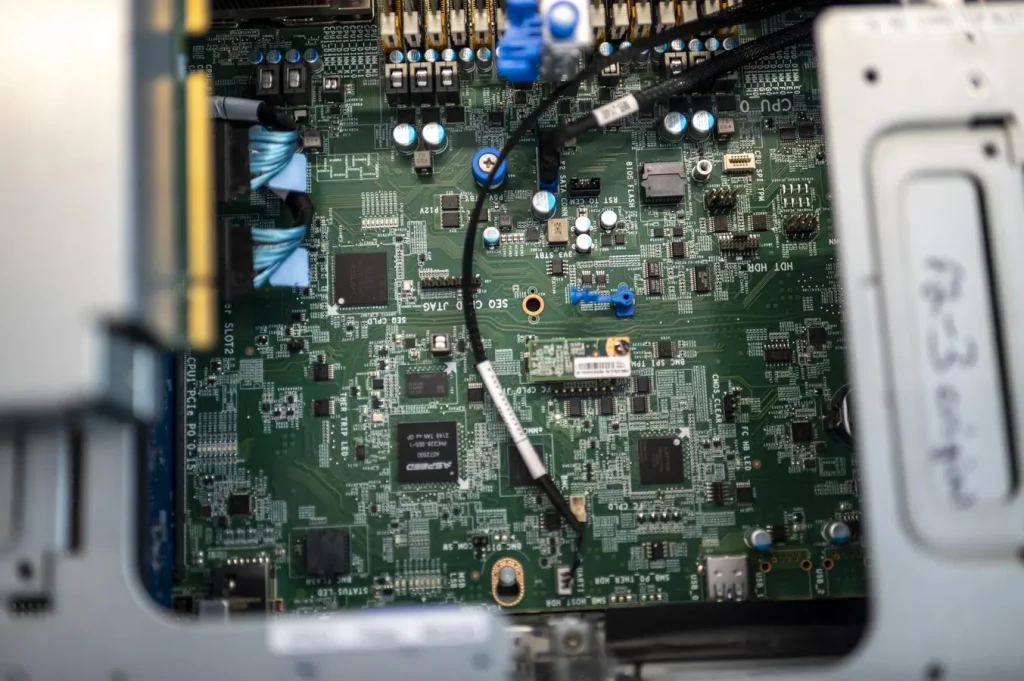The Rise of ISU Petasys: How the AI Boom Created South Korea’s Newest Billionaire
In the shadow of South Korea’s tech giants like Samsung and SK Hynix, a relatively unknown company named ISU Petasys has been quietly thriving amid the global artificial intelligence revolution. The Daegu-based manufacturer of printed circuit boards has seen its stock soar an astonishing 215% this year alone, propelling its chairman, Kim Sang-beom, into the billionaire ranks. This remarkable story highlights how the AI boom is creating wealth not just for the visible frontrunners like Nvidia and Microsoft, but also for the essential suppliers providing critical components that make advanced computing possible. Kim’s net worth now stands at approximately $1.1 billion, derived from his 17% ownership in ISU Petasys and stakes in other ISU Group companies including ISU Specialty Chemical, ISU Chemical, and biotech firm ISU Abxis. His emergence as South Korea’s newest billionaire illustrates the far-reaching economic impacts of the AI industry’s explosive growth.
The secret behind ISU Petasys’ success lies in its specialization in multi-layer printed circuit boards (MLBs) – the unsung heroes of modern computing infrastructure. These sophisticated components serve as the foundation for AI accelerators and servers, providing the physical platform where chips and other electronic components connect and communicate. As the company stated in its financial report, “The reliability and quality of PCBs significantly impact the stability and performance of AI accelerator systems.” This critical role has positioned ISU Petasys at the heart of the AI supply chain, competing with international players like Japan’s Ibiden, Taiwan’s Unimicron Technology, and domestic rival Samsung Electro-Mechanics. The company’s expertise in creating highly complex, multi-layered boards has become increasingly valuable as AI systems demand greater processing capabilities and faster data transmission speeds.
Industry analysts have taken notice of ISU Petasys’ strategic position in the AI ecosystem. JPMorgan analysts Jay Kwon and Sangsik Lee highlighted the growing importance of the company’s most advanced products in a September research note: “From GPU-centered AI infrastructure, we sense rising value in switches that enable faster data transmission across AI clusters. 800G switches are increasingly favored by end-customers. These switches utilize 40+ layer MLBs, which are ISU’s most advanced and lucrative product.” The analysts project that these high-margin, complex circuit boards will represent an increasing percentage of the company’s network segment products, growing from an estimated 22% in fiscal year 2025 to 43% in 2026. This technological edge has helped ISU Petasys secure relationships with some of technology’s biggest names, including Alphabet, Nvidia, Microsoft, Cisco, Arista Networks, and Celestica – an impressive client roster that reads like a who’s who of computing and AI innovation.
The financial results speak for themselves, with ISU Petasys demonstrating remarkable growth despite global economic uncertainties. In the first half of this year alone, the company’s revenue increased by 22% year-over-year to reach 494 billion won (approximately $350 million). Even more impressive was its net income, which surged 76% from the previous year to 70 billion won during the same period. This financial performance reflects not just market demand but also the company’s production capacity, with four factories operating in Daegu, South Korea, and one in Hunan, central China. While these numbers might seem modest compared to tech giants, they represent extraordinary growth for a specialized component manufacturer and highlight the ripple effects of AI investment throughout the global supply chain. The company’s success story challenges the notion that only consumer-facing tech giants or chip designers can benefit from the AI revolution.
Behind ISU Petasys’ success story lies a fascinating family legacy that intertwines with South Korea’s economic development. The company, established in 1972 and publicly listed in 2000, came under the control of ISU Group in 1995. The conglomerate was founded by Kim Sang-beom’s late father, Kim Joon-sung, a towering figure in South Korea’s financial and industrial history. The elder Kim established Daegu Bank in 1967, the country’s first regional bank, before going on to serve in several influential positions: governor of the Bank of Korea, head of the Korea Development Bank, and South Korea’s Minister of Finance and Economy. His influence extended to chairing both Samsung Electronics and Daewoo, once South Korea’s second-largest conglomerate before its collapse in 1999. This rich legacy of leadership at the intersection of finance, government, and industry set the stage for the family’s continued business success, though the son would chart his own course in adapting to the 21st century economy.
Kim Sang-beom’s path to becoming a tech industry billionaire wasn’t a straightforward one. Before joining the family business as ISU Group chairman in 2000, he built a diverse professional foundation. His career included time at Daewoo and work as a lawyer at prestigious New York firm Debevoise & Plimpton. His educational background is equally impressive, with a J.D. and M.B.A. from the University of Michigan and a bachelor’s degree in business administration from Seoul National University. This blend of legal expertise, international business experience, and Korean industrial knowledge positioned him to guide ISU Petasys through the technological transformations of the past two decades. Kim joins a growing cohort of Korean billionaires whose wealth stems from the semiconductor sector, including Kwak Dong Shin of Hanmi Semiconductor and Lee Chae-yoon of Leeno Industrial. His story illustrates how South Korea’s economic strength continues to evolve beyond consumer electronics and automobiles into the specialized, high-tech components powering the next generation of computing – a transformation that has created tremendous wealth for those positioned at the right technological intersections.


